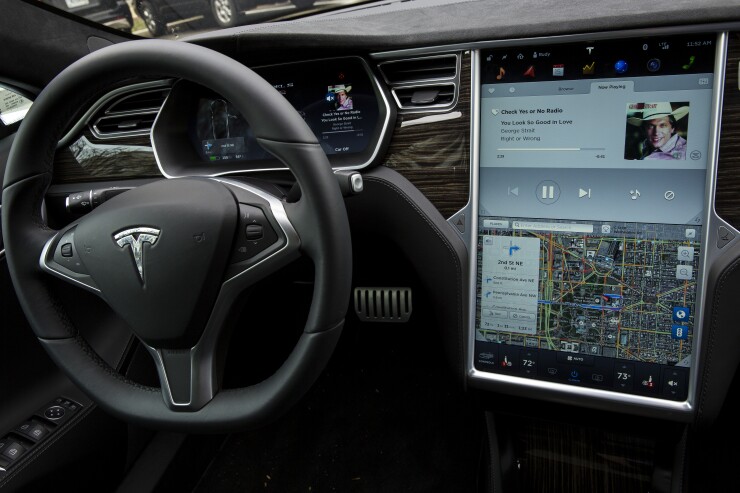(Bloomberg) -- A Tesla Inc. vehicle that slammed into a California highway barrier in 2018 with its automated driver-assist function engaged, killing the driver, had steered toward the same spot repeatedly during earlier trips, investigators reported Tuesday.
The situation occurred four days before at the same location as the March 2018 crash and several weeks earlier, the National Transportation Safety Board said in a preliminary report, citing data from the Tesla SUV’s computer.

The NTSB also released new data in a separate 2019 crash that was similar to one three years earlier leading to warnings by the NTSB. In the latest case, a Tesla Model 3 driver died on March 1 in Florida when he engaged the car’s semi-autonomous driving system and it drove into the side of a truck blocking a highway.
The crashes highlight the risks of Tesla’s so-called Autopilot system. While the company warns that drivers are responsible for maintaining control of the vehicle while using the system, some have allowed the vehicles to essentially steer themselves in a string of accidents, at least three of which were fatal.
Tesla didn’t immediately respond to a request for comment on the NTSB reports.
The NTSB reports include hundreds of pages of data about the accidents, but no conclusions about what caused them.
Walter Huang, the 38-year-old driver who died after his Tesla Model X crashed into a highway divider in Mountain View, California, on March 23, 2018, had told family members that Autopilot had steered itself toward the spot where two highways divided during his morning commute “many times,” NTSB investigators wrote, citing Huang’s family members. Huang told them he would need to manually take control to stay in his lane, the NTSB said.
“The family explained that it happened so often that he had told both his brother and his wife about the problem,” the report said.
The car’s computer-monitoring system confirmed that it had happened earlier, according to the report.
The NTSB also found Huang was playing a game on a mobile device before the collision, the agency said, citing data transmission records. However, the data couldn’t show how engaged he was with the game or whether he was holding the device with both hands at the time of the crash, the NTSB said.
Tesla has said the drivers who use Autopilot crash less frequently than while driving manually, and releases quarterly reports about Autopilot crash rates pulled from company data. The system repeatedly reminds drivers they are responsible for remaining attentive and prohibits the use of Autopilot when warnings are ignored.
In the crash last year in Delray Beach, Florida, Jeremy Beren Banner, 50, had set his Model 3 to go 69 miles (111 kilometers) per hour 12.3 seconds before the crash, the NTSB said. U.S. Highway 441, where the accident occurred, has a speed limit of 55 miles per hour.
The car didn’t detect his hands on the wheel for the final 7.7 seconds, according to NTSB.
The truck driver had slowed, but failed to stop at a stop sign before rolling into the southbound lanes of the highway, a surveillance camera showed. Banner’s Tesla hit the side of the truck and he died at the scene.
Tesla’s array of sensors can usually keep the car within its travel lane and brake if the vehicle ahead slows, but the technology isn’t suited to detect some stationary objects in the roadway.
After a similar case in 2016 in which a Tesla hit the side of a truck, the NTSB found that the Autopilot system design contributed to the accident.





